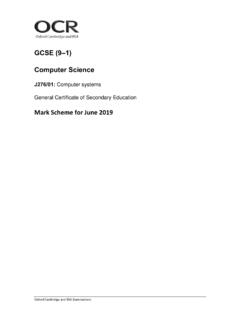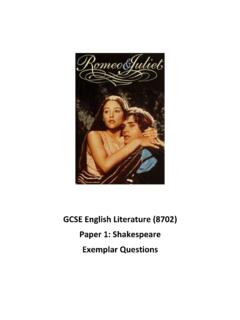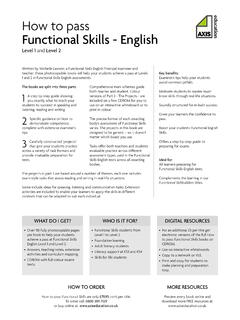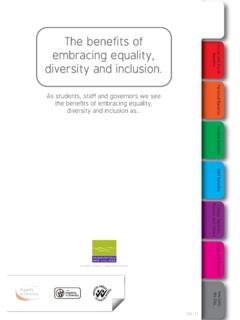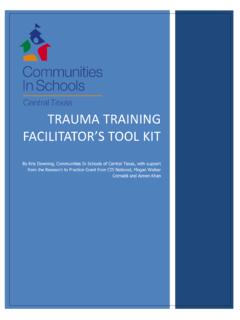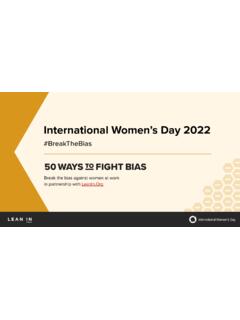Transcription of Effective questioning: a toolkit for governors
1 Effective questioning: a toolkit for governors This toolkit is for local governing bodies. Its purpose is to: Raise awareness of the important role of questioning in challenging the Headteacher Provide a framework for questioning that extends that level of challenge Identify how governors can further develop the strategic thinking of the Headteacher through the use of Effective questioning Build the confidence and skills of governors by presenting a range of questioning techniques and examples of questions offering differing perspectives on key issues. The toolkit is divided into four sections: Why do we question?
2 Which ways can we do it? What might questions look like? How can we support each other? In the spirit of our Trust values, this toolkit appreciates that all schools are different. However all our schools have a common goal which is to achieve the very best for their pupils through collaboration and tailored challenge and support that contributes to school improvement and providing the best possible standard of provision for all. It is recognised that this is achieved through open and honest communication and feedback built on professional relationships characterised by confidence and trust and a strong commitment to doing what we say.
3 This approach supports schools in their relentless quest for improvement at all levels. This includes using feedback from pupils and parents as well as staff to inform development work. Above all, the Trust believes that strong Local Governing Boards, acting as part of the Trust s monitoring and evaluation of progress in schools, are key partners to success. Section one why do we question? We ask questions for a desired result and therefore the question needs to be the right one. We therefore need to think before selecting and asking a question what do I want to achieve from this interaction?
4 Why am I choosing this particular question? Be smart! Questioning is an art and demands a particular level of skill. To identify the right question, first and foremost, you need to be a good listener .. this includes Articulating repeating what has been heard and understood what I hear you saying is ..? Clarifying checking out whether something heard is correct .. trying to achieve a better understanding of the context Being Curious waiting for information before drawing conclusions and identifying solutions Silence giving time - avoiding answering for others or finishing others sentences.
5 The right questions are smart ones and will help you to: Make connections and stimulate the flow of conversation Build on what has already been identified as working well alongside areas for development and improvement Better understand the meaning of the arguments being presented Gather more helpful information Ask for clarity on validity of evidence and data put forward Reduce errors Surface key issues behind evidence and data presented Test out hypotheses and develop your own ideas Focus on solutions Allow negotiation to take place, working towards a consensus Defuse potentially volatile situations.
6 Characteristics of powerful and thought-provoking questions are Open-ended and not leading questions Typically what or how questions Requests for information to add clarity what do you think the problem is? Reflective and support exploration, with possible prompts to find solutions Based on stimulating collaboration and finding agreed ways forward. How do I construct an Effective question? Think about your desired result and link to the discussion taking place when is the appropriate time to intervene? Stages of discussion in meetings/conversations .. identifying the issue under discussion, what concerns you the most.
7 ? seeking further information, what do you mean by ..? agreeing outcomes, what will the desired result look like? taking action, what will we do next? how will we know we ve done it successfully? Section two - which ways can we do it? Five types of questions can be used to hold schools to account. They are often used in clusters to drill down into the significance of information in relation to the school s priorities and to explore what the school has done, is doing or intends to do in response to circumstances. Information questions request information or data that can then be explored through the other types of questions Intention questions explore how things relate to the school s priorities, aims and values.
8 Causes questions explore how a situation has arisen; the conditions, events, behaviours and triggers . Meanings questions explore the meanings, possible interpretations, consequences and significance. Implications questions explore what happens next; decisions, actions and possibly revised goals. Follow-up questions Depending on the answer to a question, it may require a follow-up question from the same or one of the other types . Four further questions can be used as follow-up questions to almost any answer: What else? What So what? How do you know? Used skilfully, a sequence of questions can support: governors to understand the school s context, its challenges and its potential governors to keep questions relevant and pertinent to the school s vision governors to hold the Headteacher to account by structuring a purposeful interrogation of data, information and plans Headteachers to clarify their leadership decisions and focus on priorities Headteachers to expand their thinking and enhance their strategic planning.
9 Section three - what might questions look like? This section provides examples of some generic question structures and also some specific questions to illustrate what each type of question might look like in practice. The generic structures can be tailored to explore the current focus; just replace X with something pertinent to the issue. What are the consequences for X? This question structure could be focused in a number of ways, including: What are the consequences for the staff What are the consequences for the pupils What are the consequences for the budget What are the consequences for curriculum planning What are the consequences for recruitment?
10 It can also be phrased in a way that suits the tenor of the discussion. How will this effect staff? What will this mean for pupils? What will this do to the budget? How will this influence curriculum planning? How will this help or hinder recruitment? Generic question structures The focus and details of questions need to reflect the pertinent context and priorities but the structure of questions will often be similar. Information Intentions Causes Meanings Implications These questions request information or data which can be explored through the other types of questions.

